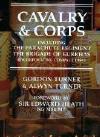Alwyn W Turner: Bibliography
|
A Classless Society: Britain in the 1990s
When Margaret Thatcher was ousted from Downing Street in November 1990 it appeared that Britain had reached a crossroads. After eleven years of bitter social and economic conflict many hoped that the decade to come would be more 'caring'; others dared to believe that the more radical policies of her revolution might even be overturned. Across politics and culture there was an apparent yearning for something the Iron Lady had famously dismissed: society. Yet the forces that had warred over the country during the 1980s were to prevent any simple turning back of the clock. The 'New Britain' to emerge under John Major and Tony Blair would be a contradiction: economically unequal but culturally classless. Whilst Westminster agonised over sleaze, Northern Ireland and the ERM, the country outside became the playground of the New Lad and his sister the Ladette, of Swampy and the YBAs, of Posh and Becks and Jarvis Cocker. A new era was dawning which promised to connect us via the ‘information superhighway’ and entertain us with docusoaps. It was also a period that would see old moral certainties swept aside, and once venerable institutions descend into farce – followed, in the case of the Royal Family, by tragedy. Opening with a war in the Gulf and ending with the attack on the World Trade Center on 11 September 2001, A Classless Society goes in search of the decade when modern Britain came of age. What it finds is a nation anxiously grappling with new technologies, tentatively embracing new lifestyles, and, above all, forging a new sense of what it means to be British. 'Alwyn W Turner is a master of the telling detail ... ravenously inquisitive, darkly comical and coolly undeceived.' – Craig Brown, Mail on Sunday by Alwyn W Turner published by Aurum Press, 2013 |
|
|
Rejoice! Rejoice! Britain in the 1980s now in paperback . . . It was an era of mass unemployment, riots, royal weddings, Greenham Common, the Falklands War, the miners' strike, Live Aid, Wapping, entrepreneurs, yuppies, Clause 28, the poll tax... When Margaret Thatcher became prime minister in 1979, she promised to bring harmony where once there had been discord, but Britain in the 1980s was a deeply divided society. After the crises that had brought the country to a standstill in the previous decade, a war raged over the direction of the nation. Thatcher's vision clashed with those of Tony Benn, Ken Livingstone and the SDP, but theirs were not the only voices. For the conflict did not stay confined to Westminster, but spilt over into a cultural war with police chiefs, comedians, pop stars, even the Church of England, all making their contribution. At stake were the souls of the great population boom of the early and mid 1960s. The future lay in the hands of the most populous generation in British history. Would they buy into the deregulated, free-market, patriotic agenda of Thatcherism, or the anti-racist, anti-sexist, anti-war attitudes of the new left? From council house sales to championship snooker, from global warming to acid house, Alwyn W. Turner's Rejoice! Rejoice!, the sequel to the acclaimed Crisis? What Crisis? Britain in the 1970s, explores 1980s Britain's spectrum of social discord from high politics through to low culture. Norman Tebbit, Edwina Currie and Roy Jenkins rub shoulders with Ben Elton, Inspector Morse and Stock, Aitken and Waterman in this superbly intelligent account of the making of modern Britain. BBC History Book of the Month 'this splendid book' – Sunday Times 'terrifically entertaining' – Daily Telegraph 'entertaining, insightful and wide-ranging' – Daily Mail 'indispensible' – Mail on Sunday      'resolutely entertaining' – Metro     'a vivid and enjoyable guide to these turbulent years' – BBC History 'dazzling overview of a demonized decade' – Mojo    
Britain in the 1980s by Alwyn W Turner published by Aurum Press, 2010 |
|
|
Crisis? What Crisis?
Britain in the 1970s now in paperback . . . The 1970s. Strikes, power-cuts, three-day weeks, inflation, Paki-bashing and the dead left unburied. Or, seen from another perspective, it was a period dominated by Morecambe & Wise, glam rock, paperback fiction, club football, Get Carter and The Good Life. Actually, of course, it encompassed both those visions, and more. It was the best of times and the worst of times. Wealth inequality was at a record low, but industrial disruption was at a record high. These were the glory years of Doctor Who and Coronation Street, but the darkest days of the Northern Ireland conflict… In 1978 London Weekend Television launched a new series, The South Bank Show, announcing that it would cover ‘the consumed arts – cinema, rock, paperbacks and even television.’ It was an acknowledgement that if you wanted to understand modern Britain, you had to look at popular culture. Crisis? What Crisis? follows that lead, telling the story of Britain in the 1970s through the soaps and sitcoms, the music and movies, the fiction, fashion and sport of the time. And it adds one crucial ingredient: politics considered as one of the consumed arts. This is not an insider’s account of the crises that wracked Britain in that decade. Rather it is the consumer’s version, a world seen through the eyes of the mass media, in which Enoch Powell, Margaret Thatcher and trade union leaders jostle for space with David Bowie, Hilda Ogden and skinheads. In researching this book, Alwyn W Turner spoke with many of the key players in the era, from Tony Benn to Norman Tebbit, from Shirley Williams to Zandra Rhodes, and from Dennis Skinner to David Van Day. He also watched hundreds of hours of British TV and films from the era, including more episodes of George & Mildred than is medically advisable. Publishing News Book of the Month 'This is a masterful work of social history and cultural commentary, told with much wit.' - Mail on Sunday Britain in the 1970s by Alwyn W Turner published by Aurum Press, 2008 |
|
|
Glam Rock Dandies in the Underworld Drawing on the collections of the V&A, Glam Rock tells the story of glam and explores its impact on fashion, theatre and film. In the early 1970s, glam rock changed the face of popular culture in Britain as, against a backdrop of a nation racked by economical and social crises, its flamboyance and theatricality provided an excuse for a party and an escapist dream for musicians and fans alike. British acts such as David Bowie, Roxy Music, T. Rex and Mott the Hoople - together with American fellow-travellers including Lou Reed, Alice Cooper and Sparks - drew on the original blueprint of rock and roll, as well as a host of other tradition, from Hollywood to the music hall, Berlin cabaret and Broadway musicals to science fiction and pop art. The resulting music was a wild blend of camp artifice and avant-garde decadence. By 1975 the era had come to an end, but glam never went away. Indeed, its attitudes and aesthetics were to shape much of what was to come, from disco to punk, the new romantics to Britpop, Prince to Lady Gaga. Dandies in the Underworld by Alwyn W Turner published by V&A Publishing, 2013 |
|
|
The Man Who Invented the Daleks The Strange Worlds of Terry Nation now in paperback . . . Terry Nation was one of the most successful and prolific writers for television that Britain ever produced. Survivors, his vision of a post-apocalyptic England, so haunted audiences in the 1970s that the BBC revived it over thirty years on. Blake's 7, constantly rumoured for return, endures as a cult sci-fi classic. And his most famous creations, the Daleks, ensured and at times eclipsed the success of Doctor Who. Indeed, almost half a century after their first appearance, new additions to Dalek mythology continue to top the Saturday-night ratings, while the word itself has entered the Oxford English Dictionary, passing into the language as the name of the most fearsome race of aliens in fiction. But while his genocidal pepper pots brought him notoriety and riches, Terry Nation played a much wider role in British broadcasting's golden age. As part of the legendary Associated London Scripts, he wrote for Spike Milligan, Peter Sellers, Frankie Howerd and an increasingly troubled Tony Hancock. And as one of the key figures behind the adventure series of the 1960s and 1970s - including The Avengers, The Saint and The Persuaders! - he turned the pulp classics of his boyhood into a major British export. Like Arthur Conan Doyle before him, Nation was frequently bemused by the appeal of his most famous creations and sometimes similarly cavalier toward them. Now The Man Who Invented the Daleks explores their curious and contested origins, and sheds light on a strange world of ambitious young writers, producers and performers without whom British culture today would look very different.
'Highly enjoyable' – Financial Times
The Strange Worlds of Terry Nation by Alwyn W Turner published by Aurum Press, 2011 |
|
| Halfway to Paradise The Birth of British Rock In 1954, just weeks after the end of rationing in Britain, Bill Haley and his Comets broke into the charts with their single ‘Shake, Rattle and Roll’. Over the course of the next ten years the country was transformed completely as it moved from Austerity to the Swinging Sixties. A crucial part of that development was the music that soundtracked the nation’s evolution. Home-grown artists like Lonnie Donegan, Cliff Richard and Adam Faith emerged from the shadows of the American stars (Elvis Presley, Jerry Lee Lewis, Buddy Holly), and laid the ground for the British invasion that was to sweep America and then the world. For nearly two decades Harry Hammond was Britain’s leading showbiz photographer. Starting in the late-1940s, his camera captured the definitive images of virtually every leading British musician, as well as those of visiting Americans. From Tommy Steele to the Beatles, from Shirley Bassey to Dusty Springfield, from trad to r&b, he shot them all. In the process, he caught too the early days of British rock television. Drawing on this invaluable archive, Halfway to Paradise tells the story of Britain’s embrace – and ultimate domination – of rock and roll, from the skiffle craze to the arrival of Merseybeat. 'Pin-sharp, richly-toned pictures which captured the slick-hair-and-shiny-suit sexiness of it all to perfection ... a balanced and factual commentary by Alwyn W Turner ... this is a book to treasure.' - Record Collector The Birth of British Rock by Alwyn W Turner photographs by Harry Hammond published by V&A Publishing, 2008
|
|
| My Generation The Glory Years of British Rock On New Year’s Day 1964, the first edition of Top of the Pops was broadcast on BBC Television. The timing could hardly have been better, coming just as British rock and roll entered its greatest and most influential period – within three months, the Beatles were occupying the top five positions in the American singles charts, and their international success was followed by a host of other groups, including the Rolling Stones and the Dave Clark Five, who were both featured on that first programme. Over the next decade virtually every major rock, pop act and soul act from Britain and America appeared on the show, and were captured by the camera of the official stills photographer, Harry Goodwin. He recorded the changing imagery of the era, as music progressed from beat to protest, from Motown and psychedelia to heavy metal and glam rock. My Generation tells the story of the music that provided the soundtrack to the Swinging Sixties and the recession of the early-1970s, and includes classic images of the biggest names in rock history: from the Beatles, Bob Dylan and Pink Floyd to Michael Jackson, Rod Stewart and David Bowie. 'Well written, but Goodwin's pictures carry the day. They're beautifully reproduced.' - Record Collector The Glory Years of British Rock by Alwyn W Turner photographs by Harry Goodwin published by V&A Publishing, 2010
|
|
| The Biba Experience
now in paperback . . . Born as a small boutique in 1964 just as London started to swing, its upward mobility followed a path diametrically opposed to that of the society around it. As the amphetamine rush of optimism wore off, and the country found itself heading inexorably towards the come-down of the three-day week, Biba – now filling all seven storeys of the old Derry & Toms store with own-brand produce – provided the escapism that Britain craved. Drawing on Art Deco, Nouveau, Victoriana and the golden age of Hollywood, it was more than just fashion: it was a whole world, a lifestyle choice. At the height of the store’s glory, the committed shopper could buy not only a new wardrobe, fully co-ordinated from head to toe, but also a complete range of cosmetics and soft furnishings, together with the washing powder to care for her clothes, and food for both herself and her pets, all presented in the distinctive Biba packaging. Alternatively she could just hang out, either lounging in the shop-windows (Biba didn’t do window-displays), or sipping cocktails upstairs amongst the flamingos that lived in the Roof Garden, or in the Rainbow Room, where on a good night there might be a live performance by the likes of the New York Dolls, Liberace or the Manhattan Transfer. It was not so much a department store as a theme park devoted to elegantly wasted decadence. And then it crashed and burned. In 1975 the unacceptable face of capitalism (which was definitely not wearing Biba eye-shadow) turned its gaze on Biba, decided that it preferred the real estate to the fantasy, and closed the shop down. And so the dream ended. Unlike its contemporaries, the likes of Virgin and Habitat, Biba fulfilled the rock & roll promise to live fast, die young and leave a beautiful corpse, and is consequently remembered with a fondness almost unique in the world of retail. This lavishly illustrated and beautifully produced book is intended for those interested in fashion and graphic design of the Sixties and Seventies, from a creative and historical standpoint, plus the huge number of people who remember Biba from the period with enormous affection. 'A must-buy for anyone seeking inspiration or a gentle reminder of a creative legend' - Vogue by Alwyn W Turner published by Antique Collectors' Club, 2004 revised edition published 2005 paperback edition published 2007 |
|
also available . . . Big Biba, the final flowering of Barbara Hulanicki’s legendary Biba store in London, was a shop like no other, before or since. It was a fabulous fantasy palace that brought the indulgence of Hollywood to the world of retail. Big Biba lasted just two years before it fell victim to recession, but the legend of what the Sunday Times called ‘the most beautiful store in the world’ continues to enchant both its former habitués and those who came to it too late. Welcome to Big Biba is the first book dedicated entirely to this dreamland, with over 150 colour photographs – most published here for the first time – of the store and of the products and graphics created for the various departments, from bathrooms to ball-gowns, from cosmetics to colouring-books. Designed by Steve Thomas, who designed Big Biba itself, and with text by Alwyn W Turner, author of The Biba Experience. 'Welcome to Big Biba is an exceptional production, with an authoritative text - including a good deal of contemporary comment - a wealth of photographs, superbly "period" design and generous reproduction of primary source material.' - The Art Book by Steven Thomas & Alwyn W Turner published by Antique Collectors' Club, 2006 |
|
|
Things Can Only Get Bitter The Lost Generation of 1992 ‘It is a great night. It is the end of socialism.’ – Margaret Thatcher on the general election victory of John Major in April 1992. Twenty years on from 1992 and the effects are still being felt. Some of these are so global in their scale that they can not be ignored. It was, for example, the year when the Maastricht Treaty was signed, setting in train the process of creating a single European currency, and when Yugoslavia imploded in a series of brutal civil wars, an event that brought into being the doctrine of liberal interventionism, still depressingly evident in Afghanistan today. It was also, less obviously, the year when a generation finally turned its back on politics. These were the people born a few years either side of 1960 – the biggest demographic bulge in British history – whose adult political experience was of a seemingly permanent Conservative government. Disillusioned by the unexpected victory of the Tories in the 1992 general election, this generation turned its attention instead to capturing the commanding heights of national culture. For a brief period, it was successful, creating a cultural renaissance that reshaped the identity of the country. In the process, however, it sowed the seeds of its own destruction, while its absence from politics ceded the field to a group of homogenised professional politicians, who were allowed to emerge unchallenged. This is the story of that generation, refracted through some of the key cultural moments of 1992. 'Fascinating stuff' – John Harris, The Guardian
The Lost Generation of 1992 by Alwyn W Turner published as an e-book by Aurum Press, 2012 |
|
| Cult Rock Posters 1972-82 From glam through punk to new wave, this collection of over 200 rare rock posters from the 1970s celebrates a decade's music and design. David Bowie's satin, tat and lipstick were the essence of glam, the spirit of punk was embodied in the rips in the Sex Pistols' Union Jack, while the Ramones posing in the New York streets shouted urbanism and decay. The posters speak directly to the viewer, communicating the style and content of the music. Many are now iconic images: the haunted, sunken-eyed Lou Reed on the front of Rock & Roll Animal, the lightning-struck face of David Bowie on Aladdin Sane, the power and anger in London Calling's smashed guitar, Adam Ant's white stripe and piercing eyes in Kings of the Wild Frontier, and Johnny Rotten's psychotic stare. These dazzling artworks are presented here together for the first time, accompanied by an entertaining and insightful commentary by pop-culture aficionados Alwyn W Turner and Roger Crimlis. With the aid of personal interviews with stars, artists, photographers and fly-posting mafiosi, they reveal the unknown stories behind the posters featured and chart the music that inspired a generation. This book is for anyone who has ever Blu-Tacked a poster to their bedroom wall. 'A winning rumination on a golden period of pop' - Mojo by Roger Crimlis & Alwyn W Turner published by Aurum Press (UK) and Billboard (US), 2006 and by Blues Interactions, Inc in Japan, 2007 |
|
| Portmeirion The Times called Portmeirion ‘the last folly of the Western World’ while the Guardian saw it as ‘a giant gnomes’ village’. For eccentric architect Clough Williams-Ellis, the man who designed and built the resort, it was ‘propaganda for seemliness,’ a statement of how planned development could enhance rather than destroy its environment. And for the quarter of a million visitors a year who make the trip to this Italianate village in North-West Wales, it’s quite simply one of the most magical places on Earth. Published to celebrate the 80th anniversary of the first opening of the resort, Portmeirion brings together for the first time all the elements that have made the name famous worldwide: from the pottery to The Prisoner, from the gardens to the genius of Clough himself. 'A splendid book with all the right people contributing' - Sir Roy Strong, Country Life edited by Alwyn W Turner published by Antique Collectors' Club, 2006 |
|
| Magic Gardens The Underwater Art of Susan Williams-Ellis Susan Williams-Ellis was one of the most celebrated British designers of the second half of the 20th century, the co-founder of Portmeirion Potteries and the creator of that company’s hugely popular Botanic Garden range of tableware. Running throughout Susan’s long life was a fascination with the world of the sea, and it is this interest in marine life that is celebrated in Magic Gardens. Susan had long wished to produce a book of her underwater art, a project that sadly remained unfulfilled at her death in November 2007. The series of pictures of tropical fish that form the centrepiece of the book began in the mid-1970s, at the height of the success of Portmeirion Potteries, and continued through to the end of the century. Well into her eighties, she was still travelling the world, still snorkelling with drawing-pad in one hand, china pencil in the other, sketching the world beneath the waves. Also included is a selection of rare works from the early years of Susan's career that reflect her longstanding interest in sea-life. The Underwater Art of Susan Williams-Ellis text by Alwyn W Turner art direction by Thamasin Marsh published by Portmeirion Ltd, 2008 |
|
| Military Bands For 250 years military bands have occupied a unique role in the British Army, supporting the soldiers, serving in the ranks during wartime and acting as a point of contact with a wider society. At the peak of military music in the late-19th century, there were more than 150 bands in the Army, attracting audiences of tens of thousands to open-air concerts. A hundred years later, the figure was down to just 29 bands and falling. A three-volume series by Gordon Turner (formerly Director of Music of the Royal Signals) and his son, Alwyn W Turner, traces the history of every band to have served in the British Army. A further volume tells the story of the Royal Military School of Music at Kneller Hall, founded in 1857. 'This sumptuously illustrated chronicle of everything you ever wanted to know about British military bands . . . this exhaustively researched book' - The Times (three volumes) by Gordon Turner & Alwyn W Turner published by Spellmount Ltd, 1994-97 by Gordon Turner & Alwyn W Turner published by Parapress, 1996 |
|



























